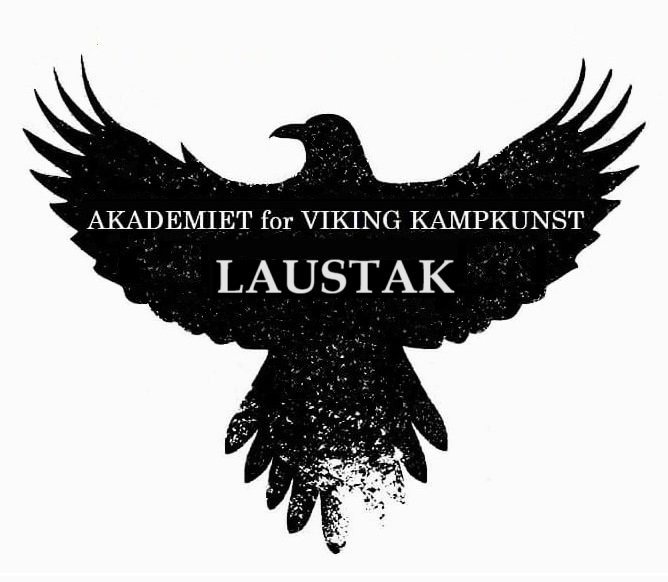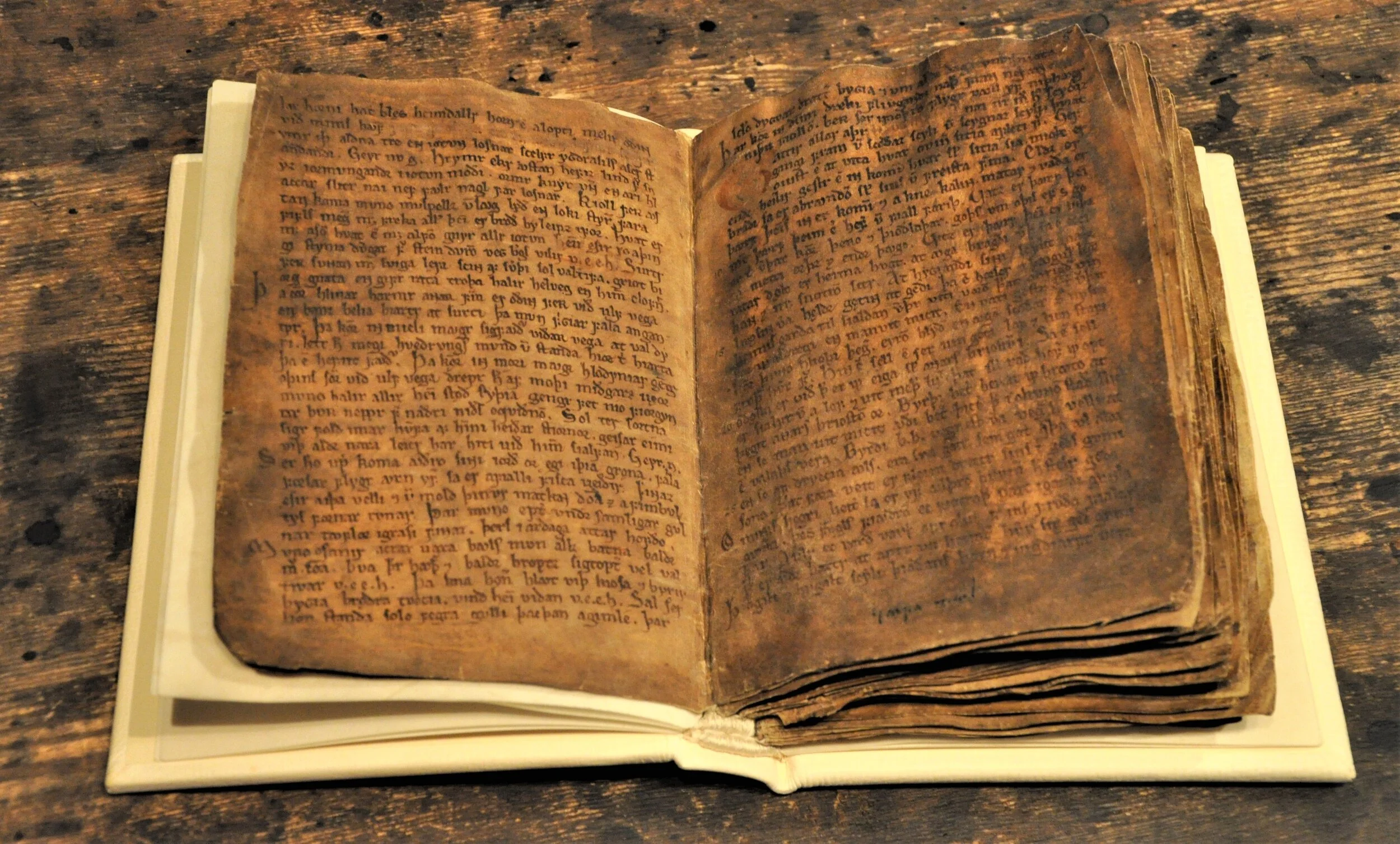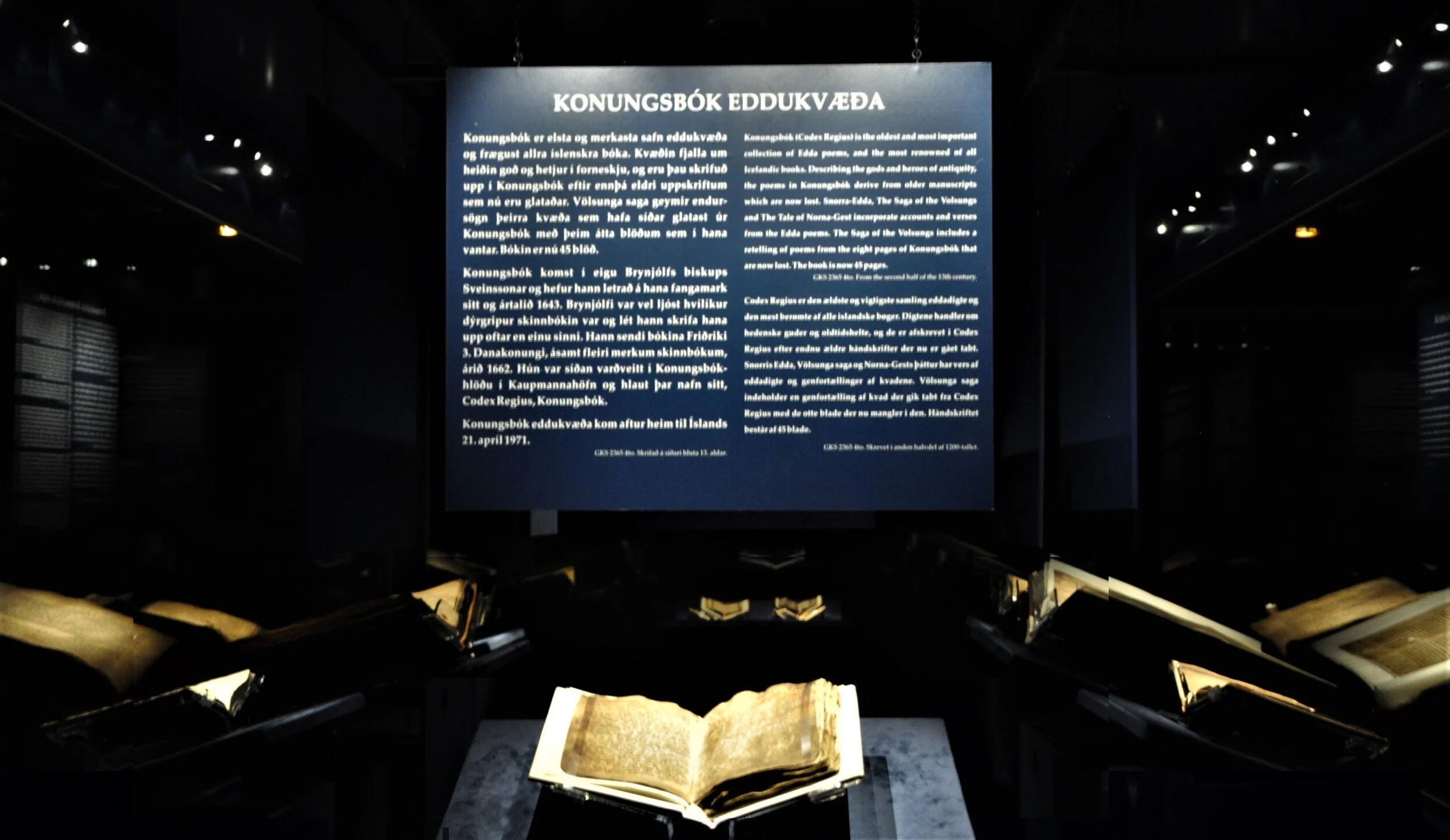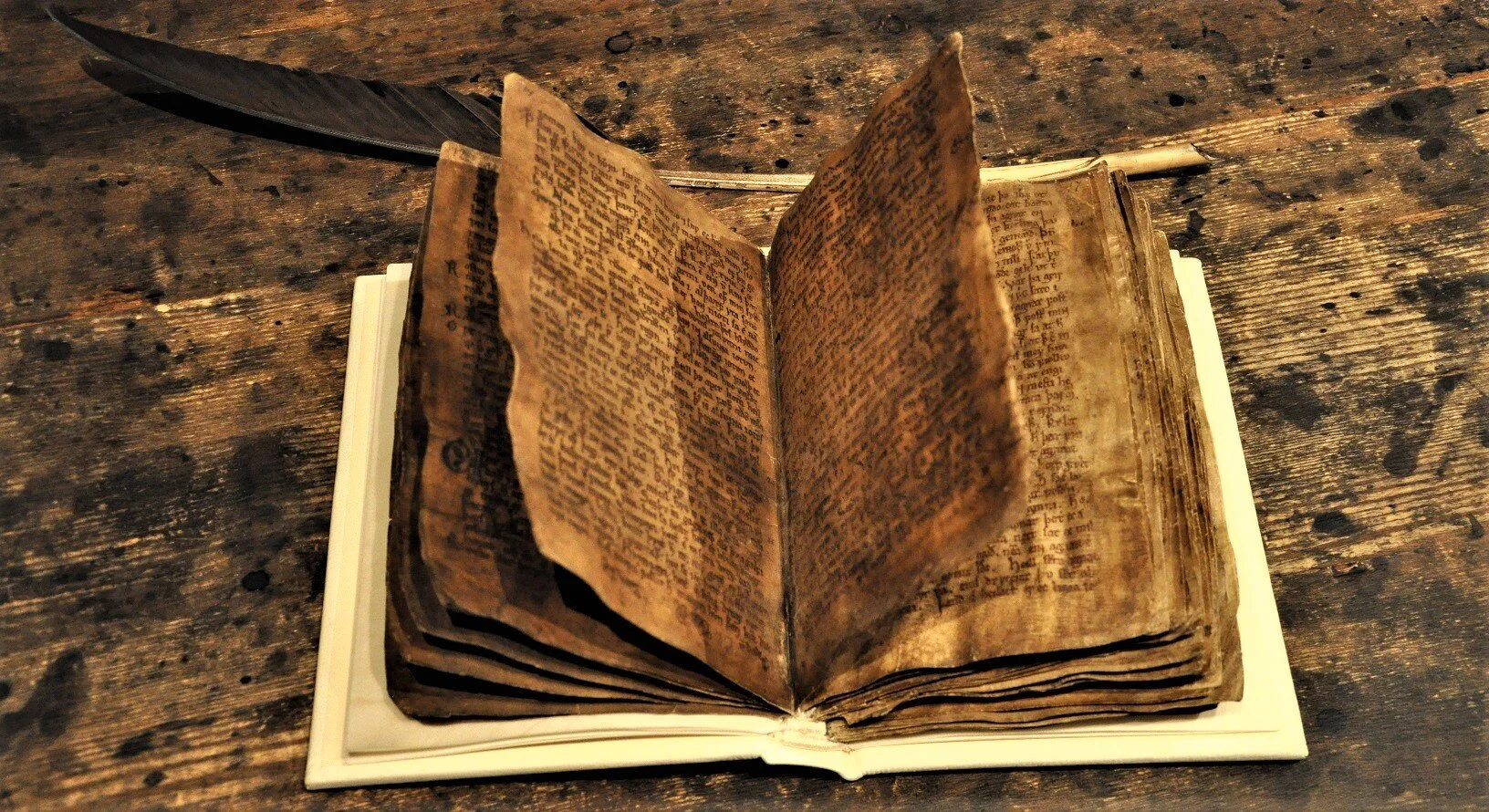VIKING WISDOM - HÁVAMÁL by Tyr Neilsen
/EXCLUSIVE PHOTO OF THE ORIGINAL HÁVAMÁL MANUSCRIPT FROM THE YEAR 1270, NOTE THAT THE WORD HÁVAMÁL IS WRITTEN IN RED AT TOP CENTER OF PAGE ON RIGHT
Hávamál is one of the most important documents from Viking Age Scandinavia, and is well described as the Wisdom of the North. This collection of ancient sayings attributed to Odin, is to Scandinavian culture as the Tao is to China, the Vedas to India and the Iliad to Greece.
Hávamál means "the high one’s speech", or Odin's speech, and Hávamál is a collection of wisdom and guidlines for living, written as a poem and attributed to the Norse God Odin. Hávamál is both practical and supernatural in content, and expresses highly valued ideals such as wisdom, friendship, morality, caution, courage, and commonsense.
No one knows who wrote the Hávamál manuscript, or if it originated in Norway or Iceland, but Odin’s advice for living is believed to be based on a source from around the 9th century, and reference to Hávamál is found in the 10th century Hákonarmál by Eyvindr skáldaspillir.
CLOSE UP OF ORIGINAL HÁVAMÁL MANUSCRIPT VERSE 76 AND VERSE 77:
DEYR FÉ, DEYJA FRÆNDR, DEYR SJÁLFR IT SAMA, EN ORÐSTÍRR, DEYR ALDREGI, HVEIM ER SÉR GÓÐAN GETR - CATTLE DIE, KINSMEN DIE, THE SELF ALSO DIES, BUT THE RENOWN, FOR HE WHO GETS GOOD FAME, NEVER DIES
DEYR FÉ, DEYJA FRÆNDR, DEYR SJÁLFR IT SAMA, EK VEIT EINN, AT ALDRI DEYR, DÓMR UM DAUÐAN HVERN - CATTLE DIE, KINSMEN DIE, THE SELF ALSO DIES, I KNOW ONE THING, THAT NEVER DIES, THE REPUTATION OF EACH OF THE DEAD






